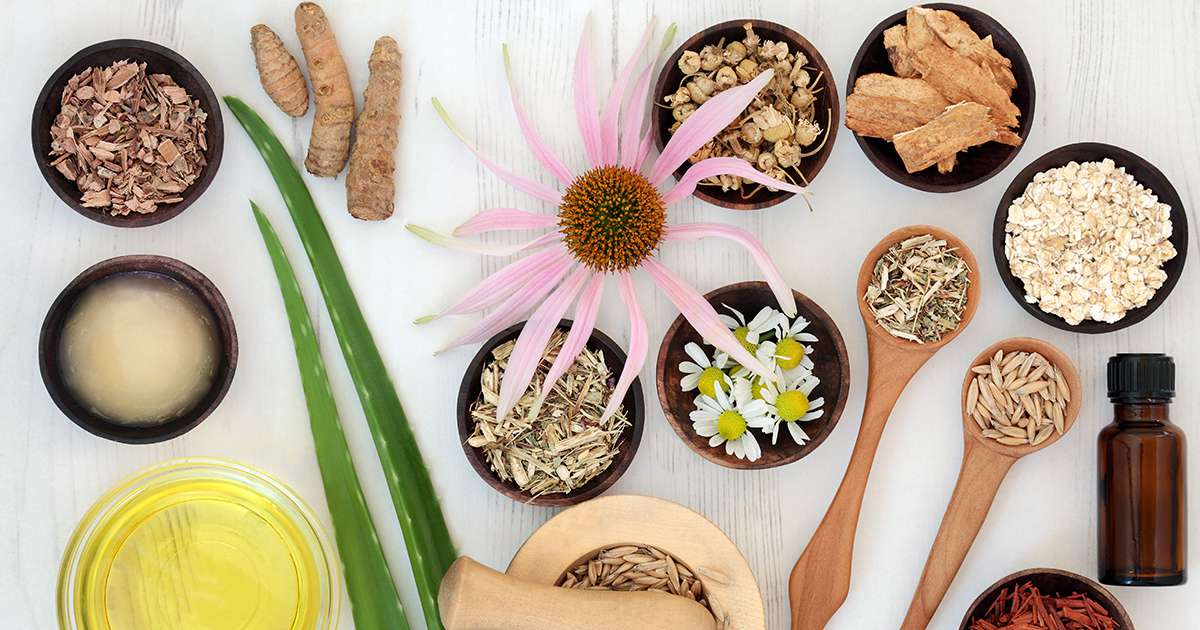By Shannon Bauer
November 01, 2017
Developed in ancient India as alternative medicine, Ayurvedic skin-care practices are a mind-body approach to better skin.
If you've ever looked into the science of yoga or Eastern medicine, then you may have stumbled upon Ayurveda. If you haven't, the gist of it is simple: Ayurveda is about nourishing your mind, body, and soul and becoming in tune with yourself and your body's needs. Ayurveda in Sanskrit translates to "life knowledge" and teaches nourishment following the rhythms of nature. "Ayurveda is the foundation for wellness internally that helps you look better externally, supporting all efforts to shape and tone your skin and body," says MaryAnna Nardone, paramedical aesthetician and certified Ayurvedic instructor.
So, while you can adapt its principles when it comes to your diet (we had a writer test out the Ayurvedic diet for its weight-loss benefits), you can also use the same principles when it comes to your skin-care routine. Here's how to implement Ayurvedic skin-care tips for healthier, glowing skin.
Determine your Ayurveda constitution.
Ayurveda is rooted in the idea that every person has a dosha, a term that refers to the biological energies that govern an individual's constitution, both physically and mentally. According to Ayurveda, doshas determine your optimal diet, mentality, lifestyle-and yes, skin-care routine. There are three main doshas, based on a combination of the elements: Vata (wind and air), Kapha (earth and water), and Pitta (fire and water). Doshas are intrinsic and last through your lifetime, but each has qualities that may be impacted by the seasons or your age, says Kathryn Templeton, Ayurvedic practitioner and clinical psychotherapist. Nardone recommends first taking the Prakruti Dosha Mind Body Quiz on her website to determine yours. Generally speaking, if you have sensitive skin that's dry or rougher in texture, you'd fall into the Vata skin type category. A Kapha skin type means your skin is naturally oily, and the Pitta skin type is characterized by things like freckles or being prone to sunburn or acne. Nardone notes that you may have a dominant dosha and a less dominant one-aka you could be a combination of doshas (a Pitta-Vata, for example).
Become a morning person.
Since Ayurveda is an overall wellness practice, finally becoming a morning person might be the key to great skin, according to experts. Since Ayurveda teaches that our body has a built-in detox, Nardone recommends going to sleep by 10 p.m. and rising with the sun around 6 a.m. Why such an early wake time? Well, according to Ayurvedic practitioners, matching our circadian rhythms with nature gives the body time to repair on a cellular level.
When you wake up, Nardone suggests starting your day with a glass of lemon water to eliminate toxins and hydrate skin. According to Templeton, you should also consider getting out in the sun for 15 minutes for vitamin D and to support circulation. If this seems like a lot to take on at once (looking at you, night owls), Nardone suggests adding just one ritual at a time.
Switch up your skin-care products.
Ayurvedic skin care takes a more minimalist approach when it comes to products, explains Amy McKelvey, an integrative herbalist and CEO of Her Vital Way. In fact, a four-step morning routine is all you need to get the skin results you crave.
1. Cleanse with a nut powder.
Washing your face removes dirt and toxins from the skin. All skin types could benefit from a cleanser with almond powder because it is both moisturizing and exfoliating and makes an ideal skin-care ingredient because of the fatty acids, adds McKelvey. McKelvey also provided recipes specific to each skin type to make your own face wash.
For Vata skin: Mix together 1 teaspoon of almond powder with 1/2 teaspoon of whole milk or coconut milk, to make a thin paste. Apply a thin layer over your face and gently massage, being mindful not to scrub or rub at the skin. Wash off with warm water before the paste begins to dry.
For Pitta skin: Mix together 1 teaspoon of lentil flour, 1/2 teaspoon of neem powder or triphala powder, and 1 teaspoon of water. Apply this paste to your face, and wash off with cool water before it dries.
For Kapha skin: Mix together 1/2 teaspoon of honey and 1/2 teaspoon of lemon juice. Apply to the face and leave on for 2 minutes then wash off.
2. Nourish with a facial oil.
The next step is to choose a facial oil for nourishment. Oils are a hallmark of Ayurveda and can be used by all skin types to balance the body's own oil production-yes, even people with acne, an overproduction, could benefit from a facial oil. Templeton recommends sesame for Vata skin, coconut for Pitta skin, and sunflower for Kapha skin. (McKelvey is also a big fan of using an oil, such as sesame, jojoba, avocado, sunflower, or coconut oil, on your body for all-over moisturized and glowy skin.)
3. Give yourself a self-massage.
The third step in your routine is Abhyanda, a gentle face and neck massage. Self-massage for just a few minutes a day can improve immune functions, improve sleep, and benefit skin circulation, says Nardone.











